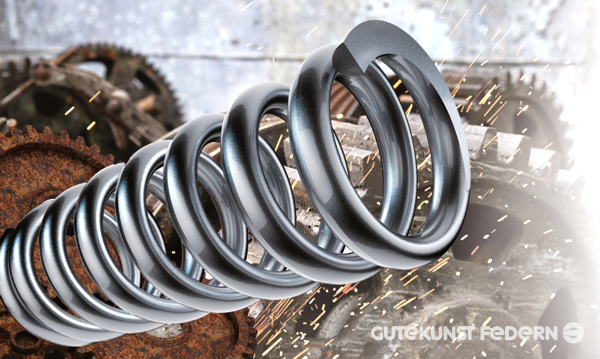 Whether in corrosive liquids, at High temperature applications or at lowest temperatures , with dynamic or static loads, compressive, tensile or bending loads: With the Design of the metal spring in extreme cases there is more to be done than that Determination of the appropriate spring material . Only an application-specific combination of spring type, Spring design , Spring material , Winding design, Surface treatment and the spring design Function and strength verification brings the optimal solution.
Whether in corrosive liquids, at High temperature applications or at lowest temperatures , with dynamic or static loads, compressive, tensile or bending loads: With the Design of the metal spring in extreme cases there is more to be done than that Determination of the appropriate spring material . Only an application-specific combination of spring type, Spring design , Spring material , Winding design, Surface treatment and the spring design Function and strength verification brings the optimal solution.
Table of Contents
The right type of spring
Let us start with a brief insight into the selection and combination options of metal springs with basic remarks on the spring types. The most commonly used type of spring (70 percent) is Compression spring ; it has the greatest resilience. In the Tension spring the eyelet connection must be checked for extreme applications. With a simple one 1/1 German loop the eyelet transition from the spring body to the eyelet is particularly sensitive. Tension springs can therefore be used in high load , with frequent load changes, be equipped with screw-in pieces at both spring ends. The load limit of Torsion springs depends on the direction of loading and the shape of the leg. This is why the following applies to torsion springs: Load only in the direction of the coil; and the shorter the leg, the higher the load limit.
Spring designs
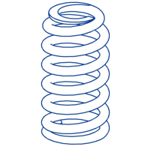
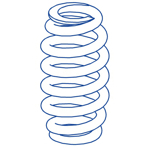
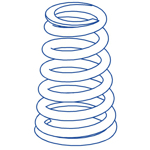
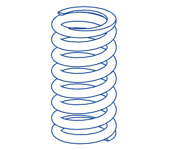
In addition to the distinction between compression springs, tension springs and torsion springs, metal springs can be used in different designs getting produced. The most common spring design is the cylindrical design, which delivers the force evenly with a linear spring characteristic. In addition, there are countless other designs such as the beehive spring and the conical or double-conical spring shape, which are used with variable spring characteristics for a wide variety of special tasks. For example, beehive springs with an upwardly tapered coil are often used for demanding dynamic applications.
Spring material
The selection of the right material is essential in extreme use. In addition to the Material selection It is primarily corrosive, electrically conductive or non-magnetic as well as high and low temperature properties Material properties in the modulus of elasticity (E) or in the sliding module (G) , after which the spring provides the desired force and returns to its original shape when the load is removed. For this purpose, high elasticity limits are low for a large elastic range Relaxation properties Even at elevated temperatures, a high fatigue strength, sufficient deformability and a smooth surface are essential. The Spring steel wire 1.4568 according to DIN EN 10270-3, for example, offers constant material properties at +121 to -156 degrees. With this property, the material is also interesting for Operations in space .
Surface treatments
However, if the desired material properties are not compatible with the required load data, or if the spring needs additional properties, various additional properties are available Surface treatments available: increased corrosion protection, increased strength, conductive, non-magnetic and many more.
Function and strength verification
Ultimately, the metal spring is optimally designed for the available installation space for the task at hand. after the Static or dynamic stress type , the total service life, the operating temperature, the ambient medium, the required Spring forces and spring travel, the existing installation space, the tolerances, the Material and the operating temperature have been determined, the spring design consists of two stages:
- The Proof of function , with the checking of the dimensions, spring rate, forces, spring travel and the vibration behavior.
- The Proof of strength , with the review of the permissible stress or fatigue strength
This requires an iterative approach in which the stress limit for the spring dimensioning is determined with a safety factor at the end. Depending on the application and how extreme the requirements are, the load limit is adjusted. In this way, the metal spring is ideally equipped for every application.
For constructive reasons, sometimes also have to Spring systems be built up from several springs to absorb forces and movements. The most common spring systems are Parallel connections , Series connections and Mixed circuits of single springs.
Gutekunst Federn will be happy to help you design the right metal spring. Simply send the requested spring data to service@gutekunst-co.com or use the following links / applications for spring inquiry, spring calculation and support: